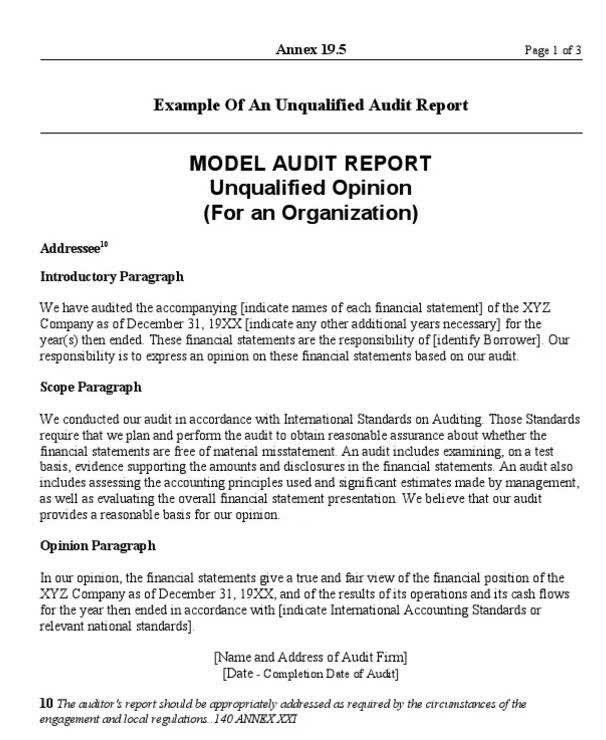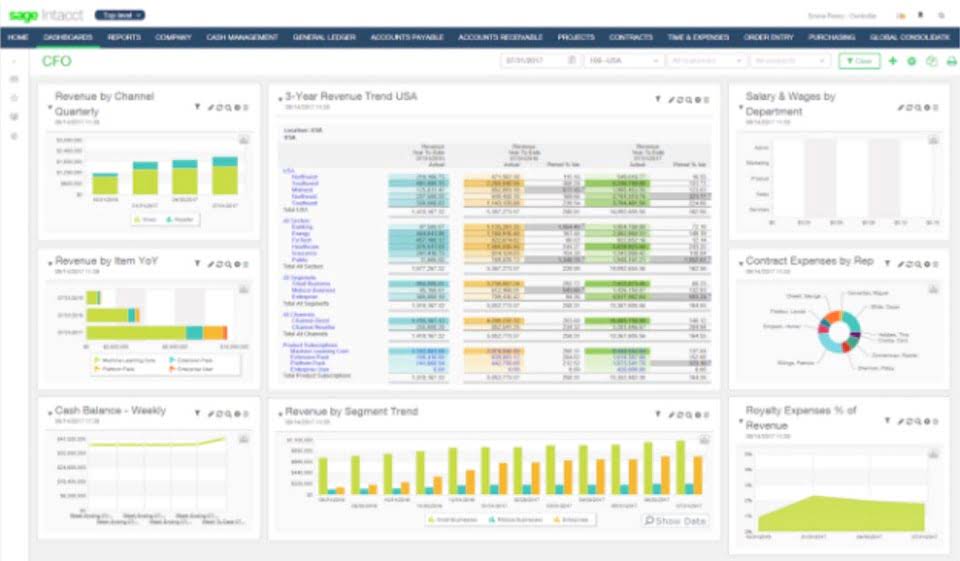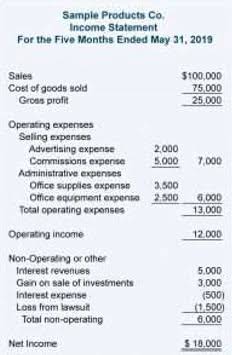The initial receipt and the subsequent deduction are both logged, revealing the net effect of the transaction without distorting the total income. Also, when products are returned, Sales Returns and Allowances—a type of contra revenue account—offset the previously recognized sales revenue. Such accurate record-keeping is vital for maintaining the integrity of your financial reports. Consulting financial experts is crucial for gaining a deeper understanding of how to effectively manage contra expenses within a business. By receiving guidance from professionals, one can navigate complex contra account scenarios with confidence and accuracy.
Why is it important for businesses to properly record Contra Expenses?
Conversely, for a contra asset account like depreciation, you would list all entries as a credit, carrying a negative total balance for the overall account. It carries a credit balance and is linked to the fixed asset account, which carries a debit balance. The accumulated depreciation account is designed to reduce the carrying value of the fixed asset account when depreciation is recorded at the end of each period.
In other words, contra revenue is a deduction from gross revenue, which results in net revenue. CCC bought equipment and machinery worth $100,000 at the beginning of the current financial year and estimates that the equipment and machinery will depreciate by $10,000 every year. Wanting to spruce up its aging inventory, Show-Fleur purchased new, climate controlled-seats for its fleet, delivering increased comfort for passengers and a cleaner, more modern look for vehicle interiors.
Contra liability account example
To convert your invoice management efforts to an electronic format that can easily share data with other financial systems, businesses can leverage Invoiced’s E-invoice Network. At the same time, our Accounts Receivable Automation software and Accounts Payable Automation software makes tracking, managing, and processing crucial assets and liabilities — and their contras — easier than ever before. For liability and revenue accounts, credit transactions will increase and debit transactions will decrease the account balances. As a reminder, assets and expenses are debit accounts whereas liabilities and revenues are credit accounts.
They serve as a means to separate and highlight certain costs that do not directly contribute to revenue generation. By incorporating contra accounts in financial reporting, companies can present a more precise depiction of their financial health, facilitating better decision-making for stakeholders. This practice aids in balancing out the impact of regular expenses, ensuring that the financial statements accurately represent the organization’s financial position and profitability. Contra equity is a general ledger account with a debit balance that reduces the normal credit balance of a standard equity account to present the net value of equity in a company’s financial statements.
And when your business still has some of these outdated, unwanted, or unusable items in your inventory, you’ll want to offset the lost value of these assets in your general ledger and balance sheet. So rather than adjusting your Inventory account, you would update its contra account — Obsolete Inventory. A contra account is an asset account that is kept at either a negative or zero balance and is used on a balance sheet to offset the positive balance of a paired asset. To put it another way, a contra account is an account listed within a general ledger with the purpose of capturing the reduced value of a paired or related account when the two are added together. The purpose of a contra expense account is to record a reduction in an expense without changing the balance in the main account.
It is used when a company initially pays for an expense item and is then reimbursed by a third party. An example of this is when a company pays for medical insurance for its employees and records it as an employee benefits expense. The reimbursements from employees are recorded in a benefits contra expense account, which results in a reduced total benefits expense for the company.
Instead, you need to record this value gap, and a contra asset account serves that purpose. A contra revenue represents any deductions or offsets that need to be removed from gross revenue to provide a clearer understanding of actual income — such as in the example just provided. These accounts will typically help track sales discounts, product returns, and allowances (e.g., a price reduction for a good with minor defects).
What Does Contra Expense Mean?
But sometimes, dissimilar transactions are important to consider together within a ledger. Accruing tax liabilities in accounting involves recognizing and recording taxes that a company owes but has not yet paid. There is the existence of contra accounts in accounting which are accounts that have the purpose of decreasing the value of another specific account if the two accounts are netted or summed together. We will define what contra accounts are, the types of contra accounts and provide examples to illustrate.
- Engaging with financial experts who specialize in contra accounts can provide valuable insights and guidance to navigate complex scenarios, ensuring that companies make informed decisions that align with their financial goals.
- Contra expenses play a crucial role in adjusting expense recognition by reflecting expenses that are deducted from gross income, providing a clearer picture of a company’s financial performance.
- In this article, we’re going on a deep dive into what exactly a contra account is, how contra accounts work, why and how you would use contra accounts and more.
- Contra expenses help in offsetting regular expenses, which in turn streamlines the expense recognition process.
- These adjustments are crucial as they directly impact the company’s net income and overall financial performance.
How are contra accounts recorded?
In a given month, the company generates $100 thousand in gross sales but provides a total of only about $2 thousand in discounts that month. If every single buyer had taken advantage of the early payment discount, the company would have provided roughly $5 thousand in discounts during that same timeframe. Optimizing your handle on contra accounts doesn’t end with just understanding them; it’s about mastering the tools and techniques to manage them effectively. Enrich your expertise by diving into online courses that dissect advanced accounting concepts, many of which come with coveted CPE credits to boot. You could explore comprehensive webinars and workshops focused on the nitty-gritty of contra accounts. The purpose of the Owner’s Withdrawal account is to track the amounts taken out of the business without impacting the balance of the original equity account.
How to Calculate Units of Activity or Units of Production Depreciation
Precision in recording these transactions is vital for providing stakeholders with reliable information for decision-making and assessing the overall financial performance of the organization. To compensate for those potential deadbeat customers, you can use a Bad Debts account to serve as a contra for your A/R. Taking the example of CCC again, the company has $50,000 in accounts receivable at year-end of contra expense December 31.
- Contra expense accounts are rarely used, because organizations find it to be easier to record third-party payments directly against an expense account.
- Inscrutable Corporation offers long-term disability insurance to its employees under an arrangement in which it pays for the insurance, and then participating employees reimburse it for half of this cost.
- This means that entries recorded on the left side of the T-account will increase the asset balance and entries recorded on the right side will decrease it.
- Each account in a general ledger will be designated debit or credit accounts depending on whether they’re categorized as assets, liabilities, revenues or expenses.
- By adjusting the contra expenses, a company can accurately reflect the actual revenue earned and expenses incurred, leading to a more transparent financial picture.
Contra equity accounts, those intriguing components in the equity section of the balance sheet, reflect transactions that reduce the total equity available to shareholders. The most common one you might encounter is treasury stock—where companies buy back their own shares. It’s essentially a reverse investment; instead of pouring money in, the company is taking it back, reflecting a decrease in shareholders’ equity. This can have various strategic implications, from attempting to increase per-share earnings to trying to prevent takeovers. Contra equity accounts, therefore, act as a ledger for corporate strategy, impacting how the worth of a company is perceived from the outside.
Examples of deferred unearned revenue include prepaid subscriptions, rent, insurance or professional service fees. A business called Show-Fleur offers private driving tours of local botanical gardens — all from the comfort of high-end limousines. For its day-to-day operations, the business maintains a fleet of 75 identical 2016 Ford Explorer limousines, each initially retailing at $150 thousand. However, these vehicles have experienced significant wear and tear in the intervening years. And currently, Show-Fleur anticipates that it could only sell each one for roughly $50 thousand, meaning the depreciation per vehicle is $100 thousand. A company receives rebates for advertising it does on behalf of brands it carries in its stores.
These contra expense accounts are imperative in maintaining the accuracy of financial records by offsetting business expenses against corresponding contra revenue accounts. For the journal entries, expenses are typically debited, while contra expenses are credited, creating a clear distinction in the accounting system. This process aids in reflecting the true financial position of the business and ensures that balance sheets accurately represent the company’s financial health. Contra expenses play a crucial role in adjusting expense recognition by reflecting expenses that are deducted from gross income, providing a clearer picture of a company’s financial performance.
In finance, the term contra expense refers to a specific account on the income statement that offsets regular expense accounts, affecting the recognition of expenses within financial reporting. It ensures that financial statements accurately reflect a company’s financial position. For instance, the “Accumulated Depreciation” contra account offsets the value of fixed assets like machinery or buildings, reflecting their reduced value over time due to wear and tear.












